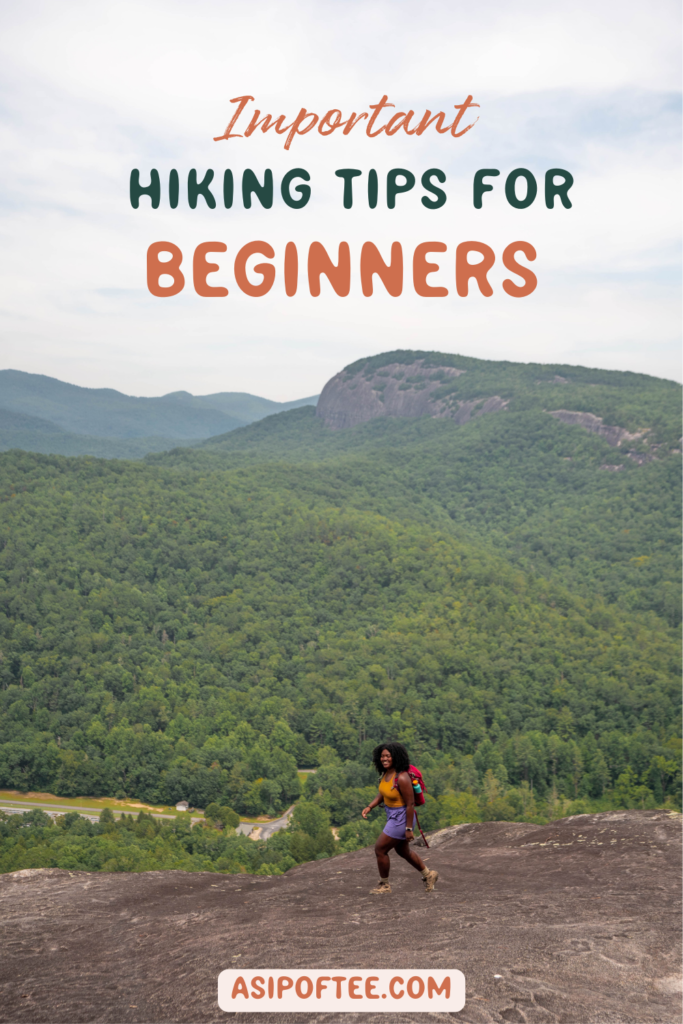Post summary: The top tips on hiking for beginners
Disclaimer: This post may contain affiliate links, where I receive a small commission on sales of the linked products at no additional cost to you. We only recommend products we genuinely love and use!
Hiking is an amazing way to connect with nature, challenge yourself physically, and enjoy the fresh air and beautiful views. Whether you’re looking to escape the busyness of your daily life, exercise, or spend time with friends and family, hiking is a wonderful activity that people of all ages and fitness levels can enjoy.
I still remember my first hike, like it was yesterday. I was 22 years old and had no idea what I was doing, but I trudged up the mountain anyways and arrived at the summit at sunset. I felt something within me shift as I took in the stunning views around me. I felt connected to nature in a way I had never experienced before. From that day on, I was hooked.
Soon, hiking became more than just a hobby; it became my biggest passion.
Now, I am so passionate about hiking that I want to share my knowledge and experiences with others—especially beginners and people of color who may feel intimidated or unwelcome by the great outdoors.
The outdoors can be intimidating when you first start, and there are probably so many questions running through your head. What do I pack, how do I dress, is it safe, will I get lost, and are there bears??? Trust me, I get it; it can be stressful, but don’t worry, we will break all that down.
In this post, we’ll dive into some tips and advice you should know as a beginner hiker so you feel comfortable once you hit the trails.

What is hiking?
Let’s start off with the elephant in the room- what is hiking!?
Hiking is an activity that involves walking on trails or paths through natural environments such as forests, mountains, and parks. Hiking can range from short, easy walks to multi-day treks requiring high fitness and endurance. This blog post will provide tips for short walks to day hikes.
Tip #1) How to choose a beginner hiking trail
Hiking should be an enjoyable experience, so make sure you take time to research and choose a trail that matches your fitness level and experience.
The best tip for beginners is to choose a trail under 2 miles long with little to no elevation gain (under 200 feet). That way, you can focus on enjoying the scenery and the experience of being outdoors without overexerting yourself.
Additionally, choosing a popular trail during its busiest times, such as weekends, can be helpful as you will be surrounded by other hikers who can help if needed. I always say hikers are some of the kindest people you’ll meet, so don’t hesitate to ask for assistance or directions if you need it.
One of my favorite ways to find beginner hiking trails is to type into Google “popular hiking trails near me.” As a beginner, you should look specifically for:
- trails under 2 miles
- under 200 feet elevation gain
- in a populated area
Tip #2) Plan Ahead: Checking the weather and doing research

You know that feeling when you’re doing the “wet dance” towards the car with soaked socks and clothes dripping from head to toe? Yeah, not fun.
Let’s avoid that altogether by planning ahead and being prepared for the weather. I recommend looking at the weather’s hourly schedule for the day to see if there is any change in the precipitation percentage or weather conditions you need to be aware of.
Once you’ve picked what trail you’re going to hike and you’ve checked the weather, then you should pick a time that you plan to arrive and leave. This way, you can give yourself enough time to complete your hike and won’t have to rush back in the dark.
If you haven’t already, consider downloading a hiking app such as AllTrails. It can help you track your progress on the trail and provide helpful reviews and tips from other hikers. It also provides detailed information about a trail, such as parking fees, trail difficulty, and more. By doing your research ahead of time, it can help you have a smoother hiking experience.
Hiking for Beginners Tip #3) Find a hiking partner or group
Hiking with a buddy can make your first hike much more enjoyable, and finding a hiking partner is easier than you might think. Here are my top tips for finding a hiking companion or group to hit the trails with:
- Meetup app– Meetup is beneficial for so many reasons because it can be used to find friends who have common interests
- Facebook groups– Join Facebook groups focused on hiking and outdoor activities. There are plenty to choose from, and many of them host events.
- Outdoorsy influencers– Reach out to your favorite outdoorsy influencers and see if they host group hikes. You never know who you might meet at their events!
- Join my group hikes– If you’re in the Southeast region, I host my own group hikes, and you are welcome to join! Check out my Frequently Asked Questions page for more details.
Tip #4) Dress Appropriately for hiking
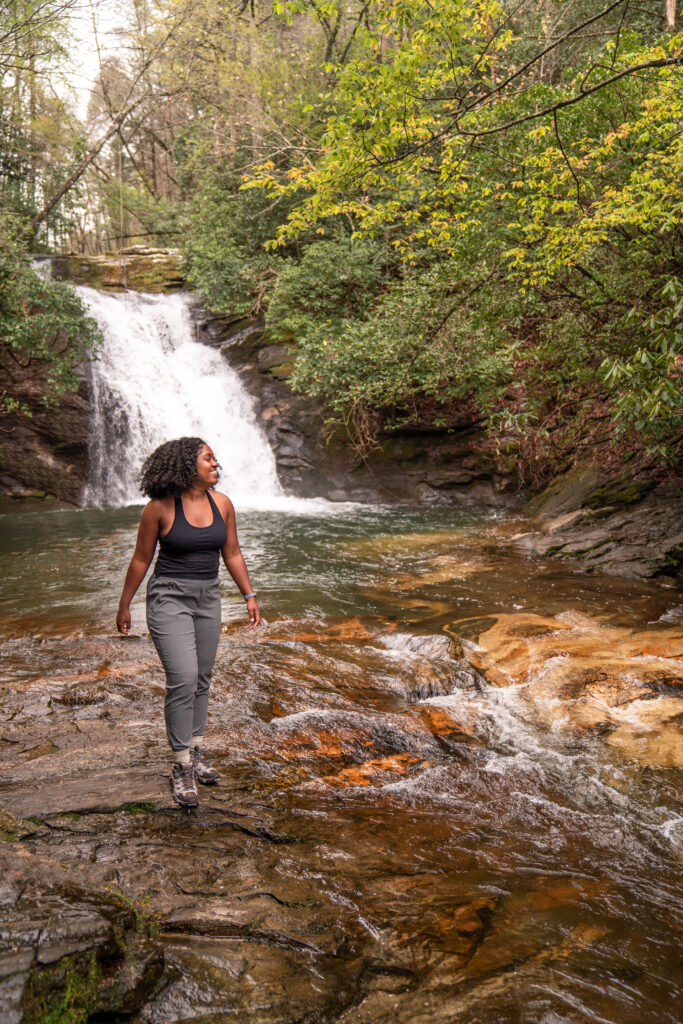
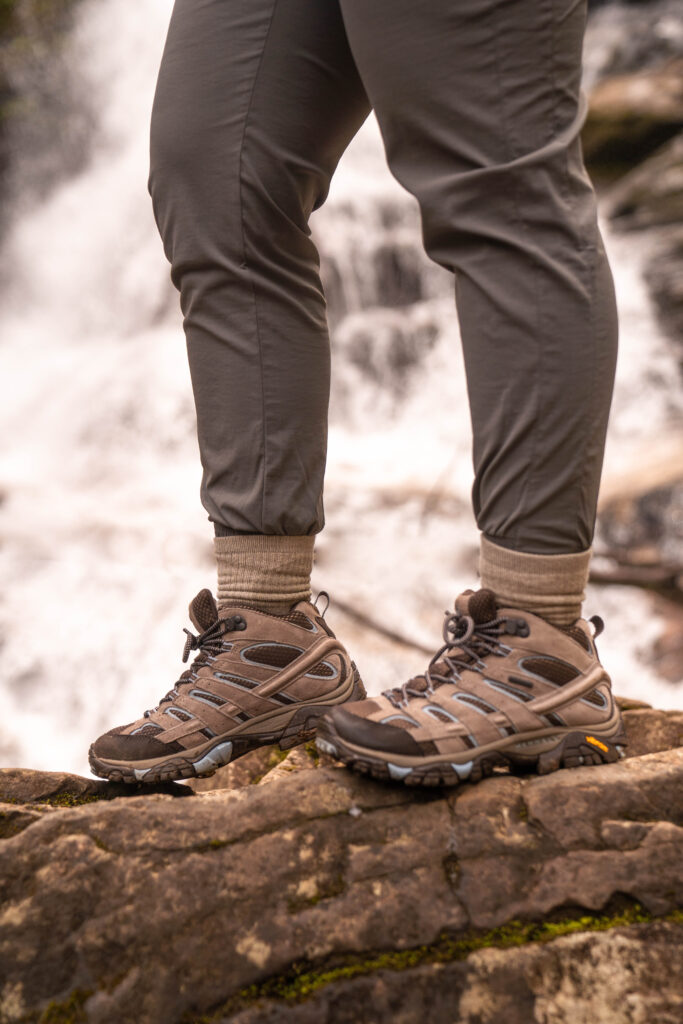
If you’re unsure about what gear is necessary for hiking, this list has got you covered. Investing in the right gear can make all the difference in your hiking experience. Below are some of my top recommendations on what to wear hiking.
Hiking Boots for Beginners
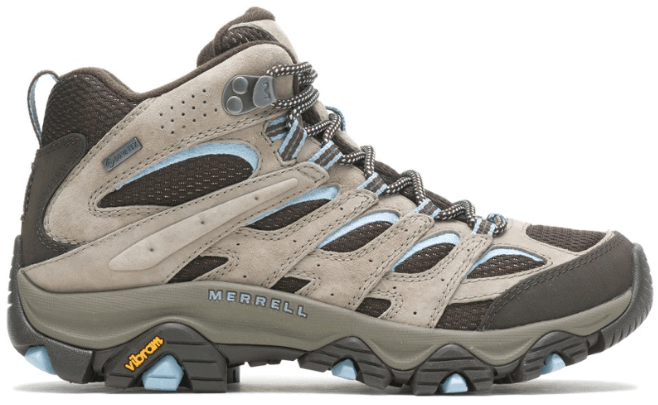
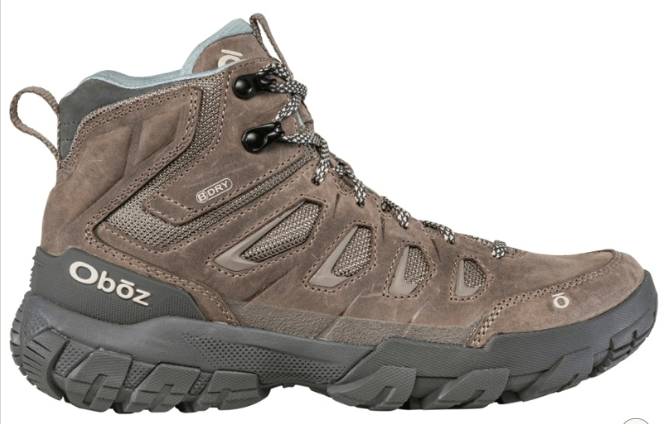

Hiking boots help prevent you from spraining your ankle, getting your feet wet, provide grip on slippery trails, and so much more. They are one of the best things you can invest in because a good pair can last you years.
My Merrell Mid 3 Waterproof hiking boots are my go-to; I’ve used them for years, even hiked all through Europe with them, and I find them very comfortable. I also recommend the Oboz Sawtooth as they are durable and provide excellent grip, and the Danner 600s are waterproof and have great ankle support.
Hiking Socks
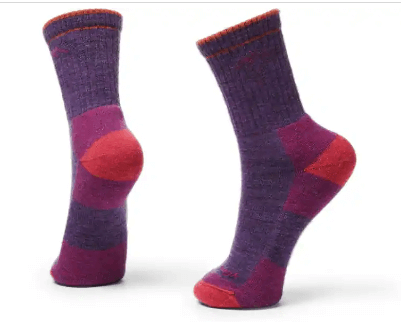
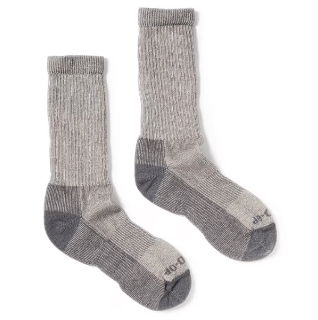
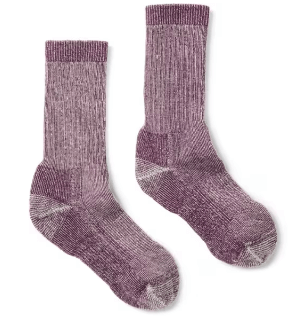
The right pair of socks can make or break your hiking experience. They’re as important as your hiking boots in preventing blisters and other foot-related issues.
My favorite hiking socks are Darn Tough because they are made out of high-quality Merino wool that keeps my feet dry and comfortable on even the longest hikes. Smartwool and REI are also great options for your hiking socks as they provide cushion, support, and breathability.
Hiking Tops

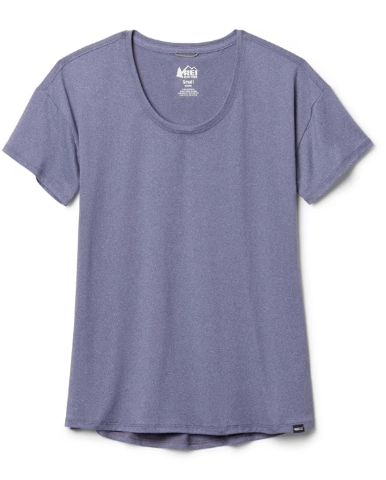
When it comes to hiking tops, I prefer lightweight and breathable materials, especially during the hot summer months. Tank tops are a go-to for me because they are stylish and allow for great ventilation and quick drying if I break a sweat.
My favorite tank tops are from Aerie because they regularly go on sale (we loveee a discount!) and provide great chest support. If you’re more interested in T-shirts, I recommend the Sahara ones from REI, which are comfortable and light.
Hiking Bottoms


My go-to hiking leggings are from Fabletics because they are affordable, stylish, functional, and have pockets to hold your phone and other essentials. Plus, if you’re a new member, you can get 2 leggings for $28!
The REI Outdoor Afro pants are breathable and colorful and are great for warmer weather. Lastly, REI offers great leggings as well. All three options are comfortable and durable, allowing you to fully enjoy your time in nature without worrying about your clothing.
Hiking Layers


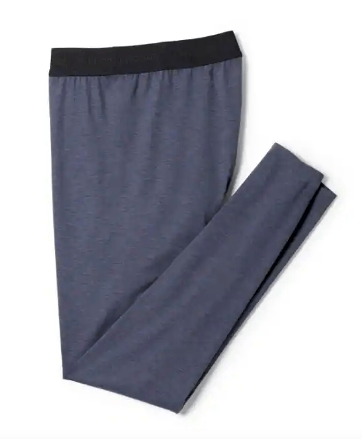
It’s always a good idea to bring another layer of clothing in case it gets cold on your hike. Especially if it is early morning or in the evening. Smartwool offers great base layer tops that provide excellent warmth, moisture-wicking capabilities, and comfort.
Smartwool’s base layer tops are also made from high-quality, sustainable materials and are designed to last, ensuring you get the most out of your investment. If you’d prefer a more affordable option, REI has great base layer tops and bottoms that do well in colder temperatures.
Hiking for Beginners Tip #5) Pack the Essentials
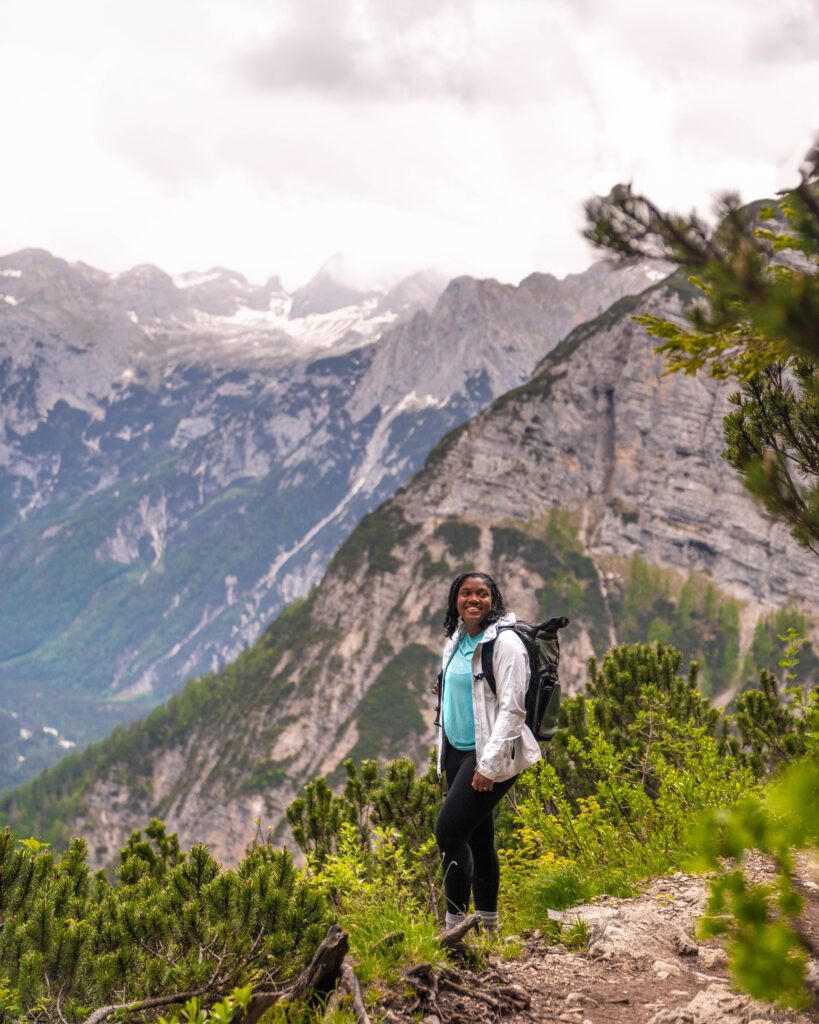

The 10 Essentials
Whether you’re a beginner or an experienced hiker, knowing what to pack for the trails is important. REI’s article on the 10 essentials is a great resource to ensure you have everything in your pack. While you may not need all of these items on every hike, it’s important to know what they are and why they are essential for your safety.
The ten essentials include navigation tools, a headlamp for visibility, sun protection for your skin, first aid supplies, a knife, fire-starting equipment, shelter, food, water, and extra clothes.
By packing these items, you’ll be well-prepared for your outdoor adventure. I’ve listed some other things you should consider bringing below:
Bring a day pack
You need something comfortable to carry your water, snacks, camera gear, etc. The backs on these packs are essential on these because you don’t want to finish your hike in back pain. I always suggest looking for bags with a hip belt!
For a day hike, a bag anywhere from 20L to 30L is a great size and has plenty of room to pack all of your items.
Pack a rain jacket
Rain jackets help shield you from rain and wind and will also ensure that you stay dry and comfortable. For that reason, I always keep one in my day pack because the weather can be very unpredictable.
Outdoor Research is my favorite brand for rain jackets as theirs uses GORE-TEX material, which offers exceptional durability and waterproofing. However, if you’re looking for other great options, I recommend checking out the rain jackets from REI, like their Rainer jackets. Both brands offer high-quality rain jackets designed to keep you dry and comfortable in any weather condition.
Tip #6) Hiking Safety
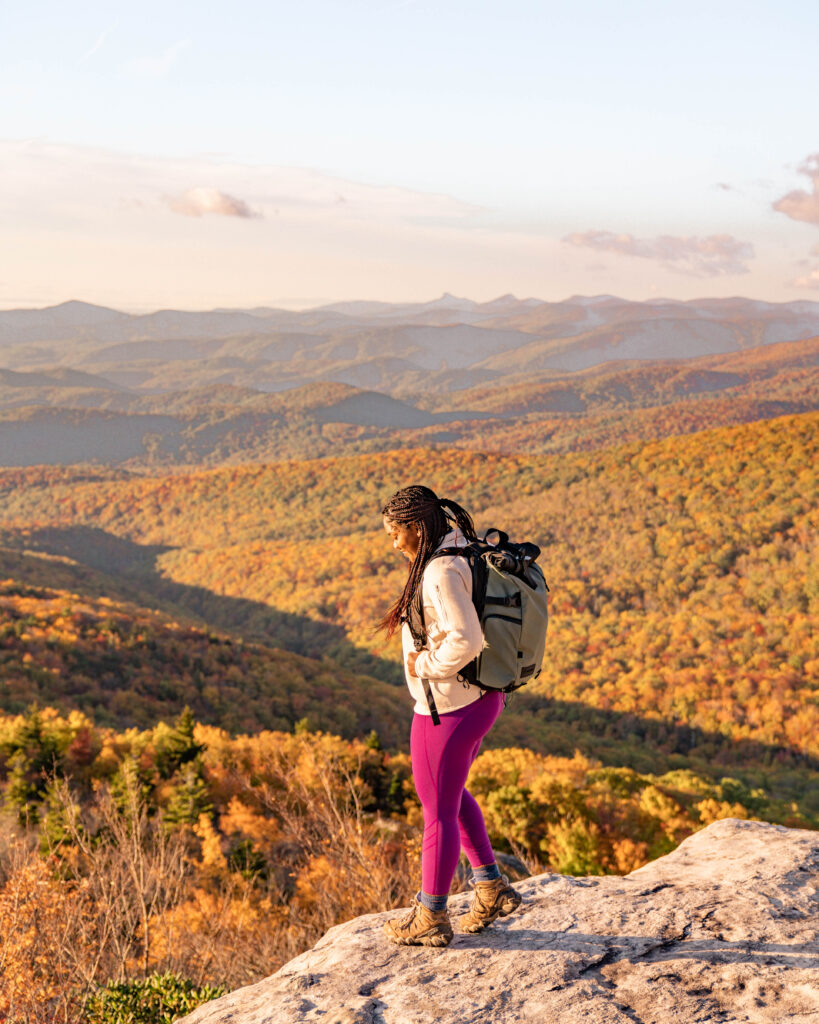
As a beginner hiker, there are a few things you should be aware of before your first hike. First, always tell someone where you’re going and when you plan to return. If you don’t return on time in an emergency, your loved ones and authorities will know where to start looking.
Watch for wildlife and be prepared to react appropriately if you encounter any. Most animals are generally more scared of you than you are of them. If you leave them alone, they usually won’t bother you. If you are hiking in bear country, I recommend checking out Renee Roaming’s article on proper bear safety.
Finally, bring enough food and water to keep you hydrated and energized for your hike. Following these safety tips, it can help ensure a safe and enjoyable hike.
Hiking for Beginners Tip #7) Leave No Trace Principles
Leave no trace means taking care of the outdoors so it can be enjoyed by everyone else. You can do this by making sure you don’t leave any garbage or messes behind, staying on the trails instead of wandering off into the bushes (this destroys the vegetation), and more.
There are 7 leave-no-trace principles to be aware of. These are so important because they allow us to keep our trails clean and beautiful so the next person can enjoy them! Here are the principles below:
- Plan ahead and prepare
- Travel and camp on durable surfaces
- Dispose of waste properly
- Leave what you find
- Minimize campfire impact
- Respect wildlife
- Be considerate of other visitors
Tip #8) Proper hiking etiquette
Knowing the proper hiking etiquette can help with the safety of yourself, others, and the environment. Here are a few things to know:
- People going uphill have the right away. Kindly step to the side and allow them to pass unless they wave you to come because sometimes they may need a breather.
- Don’t play loud music. Keep it in your headphones so you don’t disturb others who are enjoying the trail as well.
- Stay on the designated trails. You may come across shortcuts or side paths, but walking on these trails is harmful to the vegetation of the environment
Final Thoughts on Hiking For Beginners
Hiking is a great activity everyone can enjoy, whether looking for breathtaking views, getting a workout in, or simply seeking solitude and peace.
By following these eight tips, beginner hikers can make their first hiking experience safe, enjoyable, and memorable. Plan and prepare, start small, wear appropriate gear, stay hydrated, remain on the trail, leave no trace, be aware of your surroundings, and respect wildlife. Happy hiking!
Lastly, if you found this post helpful, please share it!

